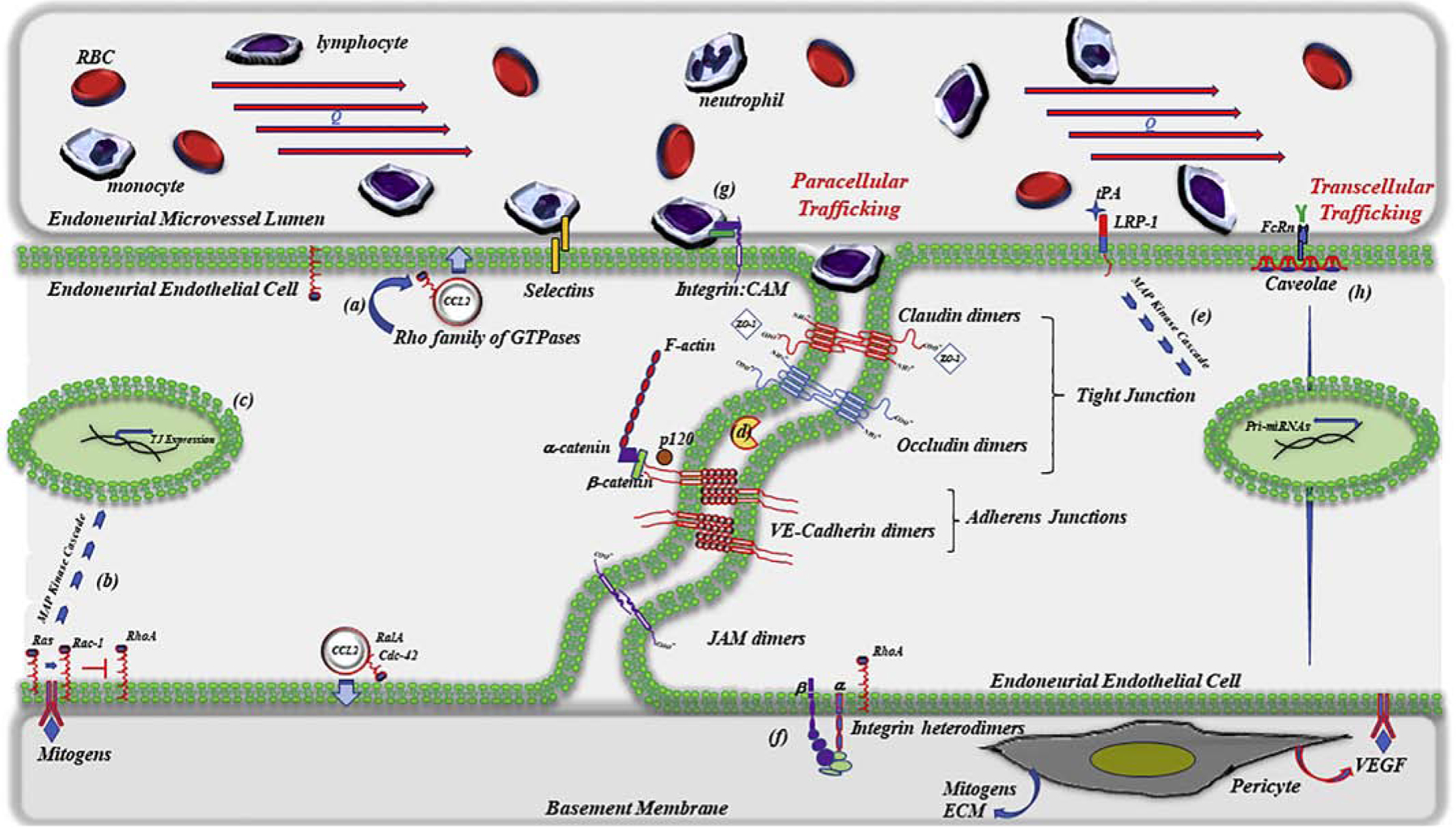Figure:

Illustration of a serpentine junctional interface between two endoneurial endothelial cells emphasizing multiple putative intracellular and extracellular therapeutic molecular targets currently under intense investigation for the management of inflammatory peripheral neuropathies/neuropathic pain. Strategies include preclinical evaluation of inhibitors/activators that are designed to either limit paracellular trafficking of leukocytes across perineurial/endothelial barriers or, in the case of neuropathic pain, transiently open restrictive perineurial/endothelial barriers. Shown is a partial selection of targets of interest which includes (a) the Rho family of small monomeric GTPases affecting chemokine release (b & c) mitogen-stimulated GTPase-dependent upregulation of tight junction protein expression (d) matrix metalloproteinases / TIMP-1 (e) tPA-LRP-1 dependent expression of claudin-specific miRNAs (f) ECM-integrin facilitated GTPase-mediated localization and stabilization of VE-cadherins (g) integrin-CAM signaling and (h) caveolae-dependent transcellular trafficking. Therapeutic strategies currently approved for the clinical management of inflammatory neuropathies include non-specific immune modulating corticosteroids, intravenous immunoglobulins, or plasmapheresis. Clinical strategies used for the management of neuropathic pain, while pharmacologically numerous, do not currently target the BNB.
